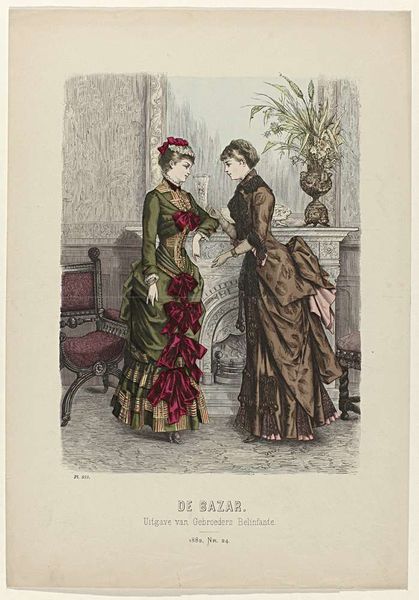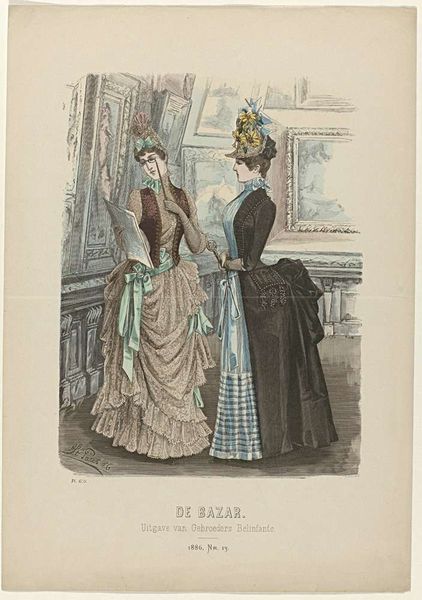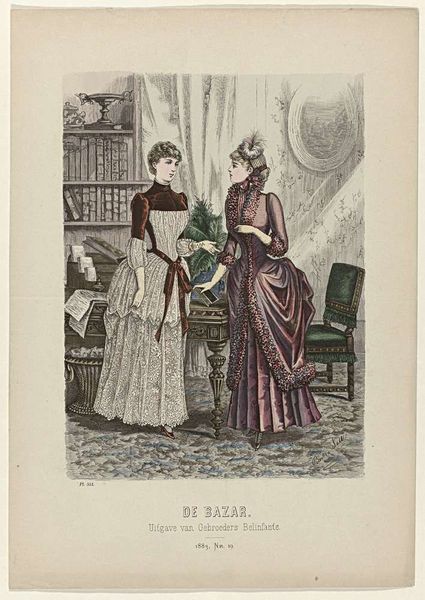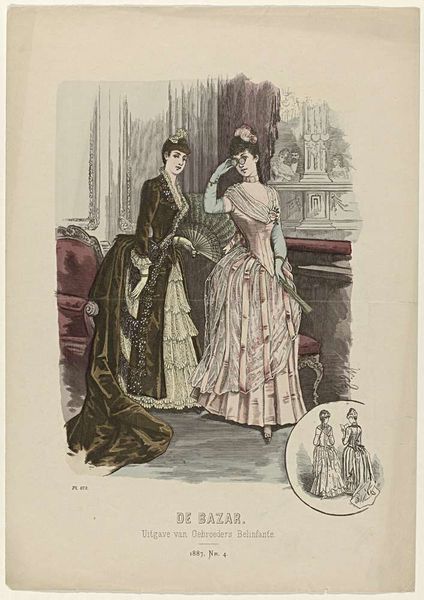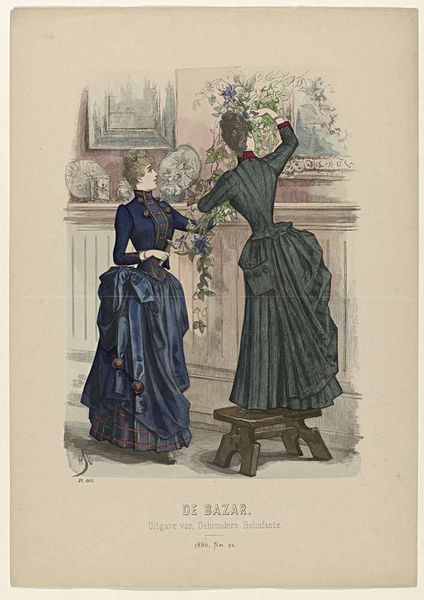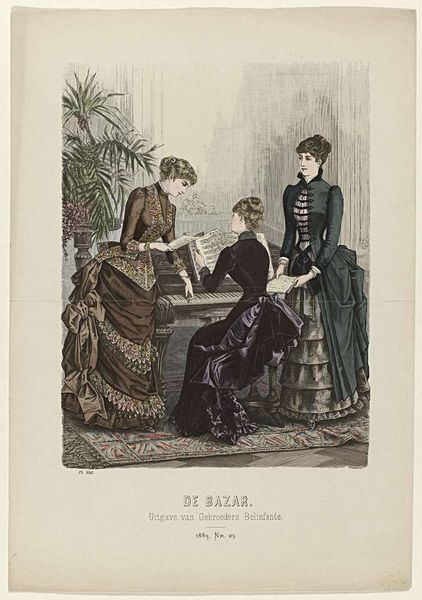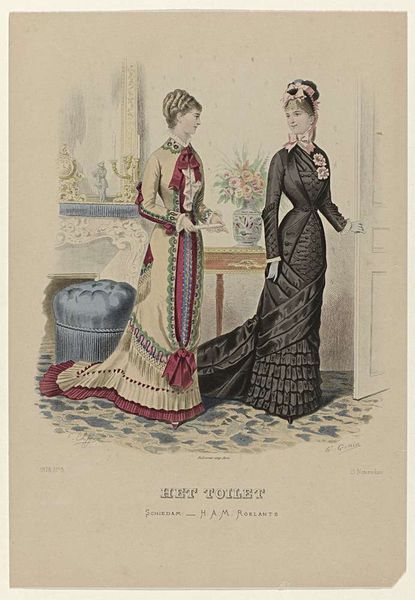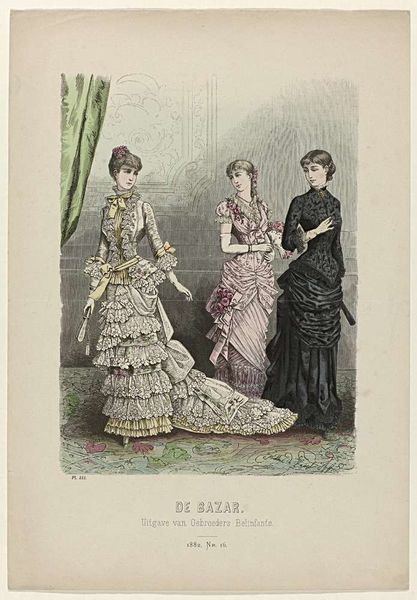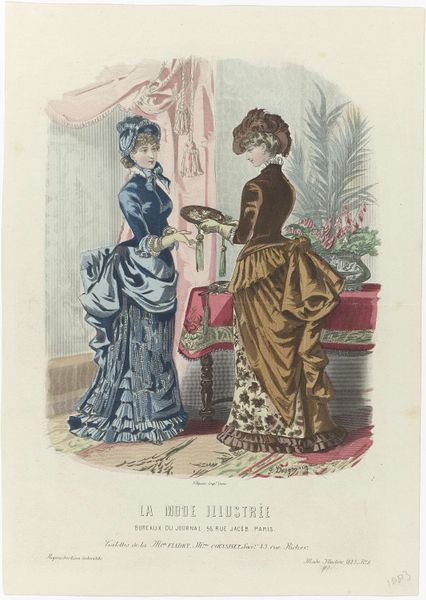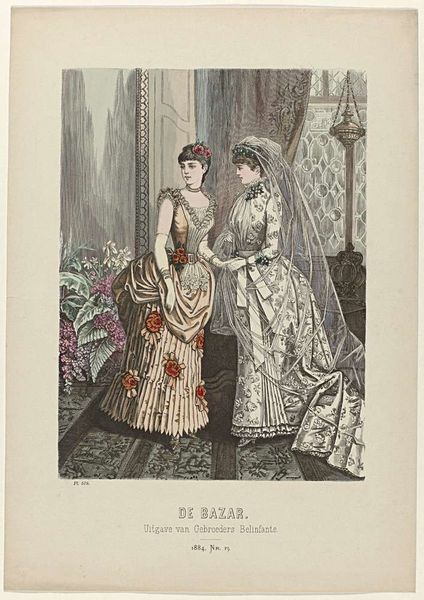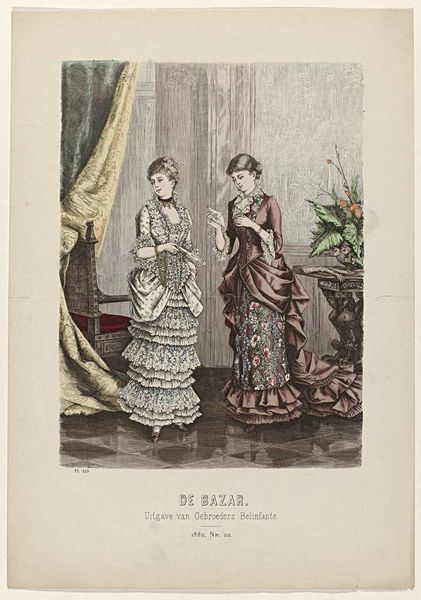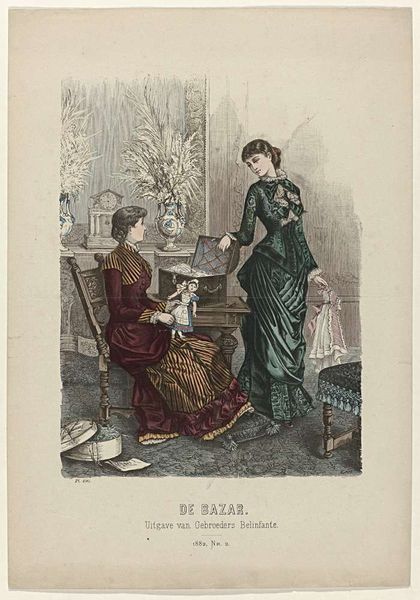
print, etching
# print
#
impressionism
#
etching
#
figuration
#
genre-painting
#
decorative-art
#
realism
Dimensions: height 381 mm, width 268 mm
Copyright: Rijks Museum: Open Domain
Editor: This is a print called "Shopping" from 1882. The figures and setting seem so specific, it’s like stepping back in time. What stands out to me is the dynamic between these women – are they customers, or friends, or rivals? What's your take on it? Curator: This piece provides a window into the rapidly changing social landscape of the late 19th century. Etchings like this served a crucial role, didn't they? Beyond just aesthetics, how do you think these images shaped ideas about consumption and femininity at the time? Editor: It's interesting to consider the impact this had. These images presented an ideal but wasn’t attainable for many women. But what’s the message? What kind of dialogue did this image spark when it first appeared in 1882? Curator: Precisely. By situating these women within the 'the Bazaar,' the image reinforces the link between female identity and commodity culture. Think about the decorative elements. Do they empower women, or further constrain them within the domestic sphere? Editor: So, it is complicated. It looks like these items promise progress, but end up making limitations on women’s growth. Now that makes me think differently. Curator: These were formative images which reveal more if you understand the context. By considering its role in promoting new forms of consumerism aimed at women. Understanding the power of images, don't you agree? Editor: Absolutely. I had never thought how deeply rooted shopping was to the lives of these women. Thanks. Curator: You're most welcome. Seeing the societal impact adds another layer.
Comments
rijksmuseum about 2 years ago
⋮
Until the 1870s women were not allowed to go out without a male escort, but then the cramped, unsafe lanes and alleys of Paris were replaced by broad, illuminated and hence ‘safe’ boulevards, lined with a plethora of shops. The age of ‘shopping’ – and window shopping – was born. Fashion illustrators tapped into this new phenomenon in their work. Women in walking dresses were represented admiring, trying on and also purchasing items in the new ‘department stores’.
Join the conversation
Join millions of artists and users on Artera today and experience the ultimate creative platform.
